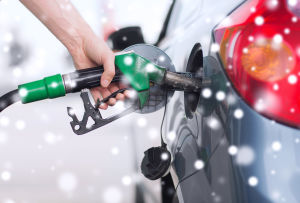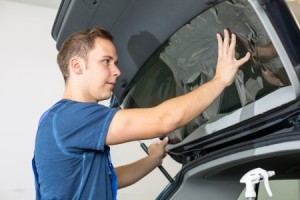3 Common Car Problems After Hitting a Pothole
 Minnesota is known as the land of 10,000 lakes, but during the springtime it can look like the land of 10,000 potholes. These holes can prove dangerous, especially if you drive over a deep pothole. Below, we’ll discuss why potholes form, and what kind of damage they typically cause.
Minnesota is known as the land of 10,000 lakes, but during the springtime it can look like the land of 10,000 potholes. These holes can prove dangerous, especially if you drive over a deep pothole. Below, we’ll discuss why potholes form, and what kind of damage they typically cause.
Pothole Problems
Ever wonder why potholes seem to sprout up everywhere as winter begins to thaw? That’s because as the snow melts, water seeps into the cracks in the road. As the temperature drops at night, the water in the cracks freezes. If you’ve ever taken 6th grade science, you know that water expands as it freezes. The frozen water puts pressure on the area, and that pressure can rupture if it becomes too great or if a car drives over the spot.
People often try to avoid potholes, which is the preferred method as long as you don’t leave your driving lane. Others think that if they slow down, they’ll put less damage on their car than if they hit it at high speeds. Unfortunately, this is a misconception, and slowing down can cause increased damage to your vehicle.
To illustrate why slowing down is problematic, consider this example. Imagine you are on a golf course, and you’re putting on the 18th hole. If you hit your ball perfectly, it will fall into the cup near the end of its roll. If you hit the ball too hard, but right on line, your ball may hit the far edge of the cup and ricochet away. The ball didn’t go in the hole because it was going too fast and didn’t have enough time to drop. The same rules apply for hitting a pothole. The faster you hit the pothole, the less time your wheel will have to drop into the hole. The slower you hit a pothole, the further your wheel will sink into the hole before hitting the other side. That said, hitting a pothole at excessive speeds an be dangerous if it causes you to lose control of the vehicle.
Common Issues
Three common issues cause by potholes include:
Tire Damage – Hitting a pothole can flat out pop your tire, but it can also take a chunk out of your tire. A damaged tire can make you more susceptible to blowout on the road, which can be dangerous at high speeds.
Alignment – If you hit a significant pothole, or just a collection of potholes over time, your car can get out of alignment. This can cause your car to pull to the left or right, which aside from being dangerous, can lead to further damage if left untreated.
Bearings – Bearings are what help your car turn from side to side. If you hear a grinding noise when turning, you may have damaged your bearing. No need to explain the danger associated with the inability to get your car to turn in the proper direction.
If you think your car has sustained pothole damage, don’t hesitate to contact us for a free quote.
Related source: Yahoo, MDoT
-
Improving Gas Mileage in Cold Weather
 Dec 2, 2014
Dec 2, 2014Winter is here, and by all accounts it appears it’s here for good. When temperatures drop, so too does your car’s fuel economy. Below, we explain why winter driving lowers your average mile per gallon and share some tips to raise it back up. Cold Weather and Your Car One car study found that the […]
-
Minnesota Window Tint Quiz
 Jul 16, 2014
Jul 16, 2014With summer in full swing, many Minnesotans are considering tinting their car windows in an effort to keep their car cool when the temperatures rise. We specialize in window tinting, and while some people prefer to tint their windows on their own, you’ll want to make sure you stay in line with the law. We […]
-
How Often Should I Check My Car’s Fluid Levels?
 Aug 21, 2013
Aug 21, 2013Other than gasoline, most drivers don’t give their car’s fluid levels a second thought on a daily basis. As we’ve said before, the key to extending the life of your vehicle is to prevent breakdowns from occurring, as opposed to fixing the problem after it happens. While some fluids aren’t as integral to maintaining peak […]




